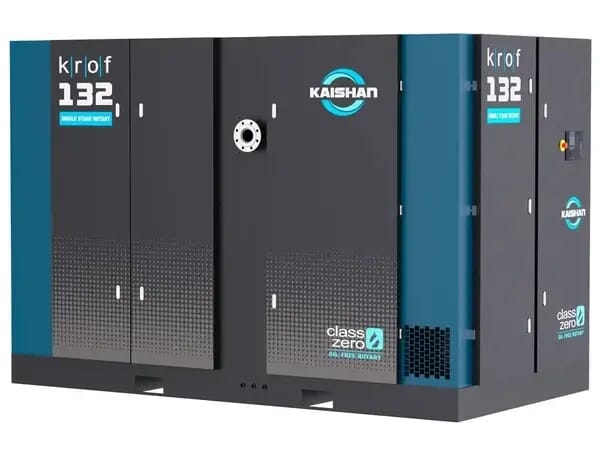
Kaishan USA Launches New Industrial, Oil-Free Rotary Screw Compressor
October 23, 2023
How to Maintain Your Air Compressor with Genuine Spare Parts
November 1, 2023Using Compressed Air Systems in Wastewater Treatment
Kaishan USA | October 25, 2023 | Uncategorized
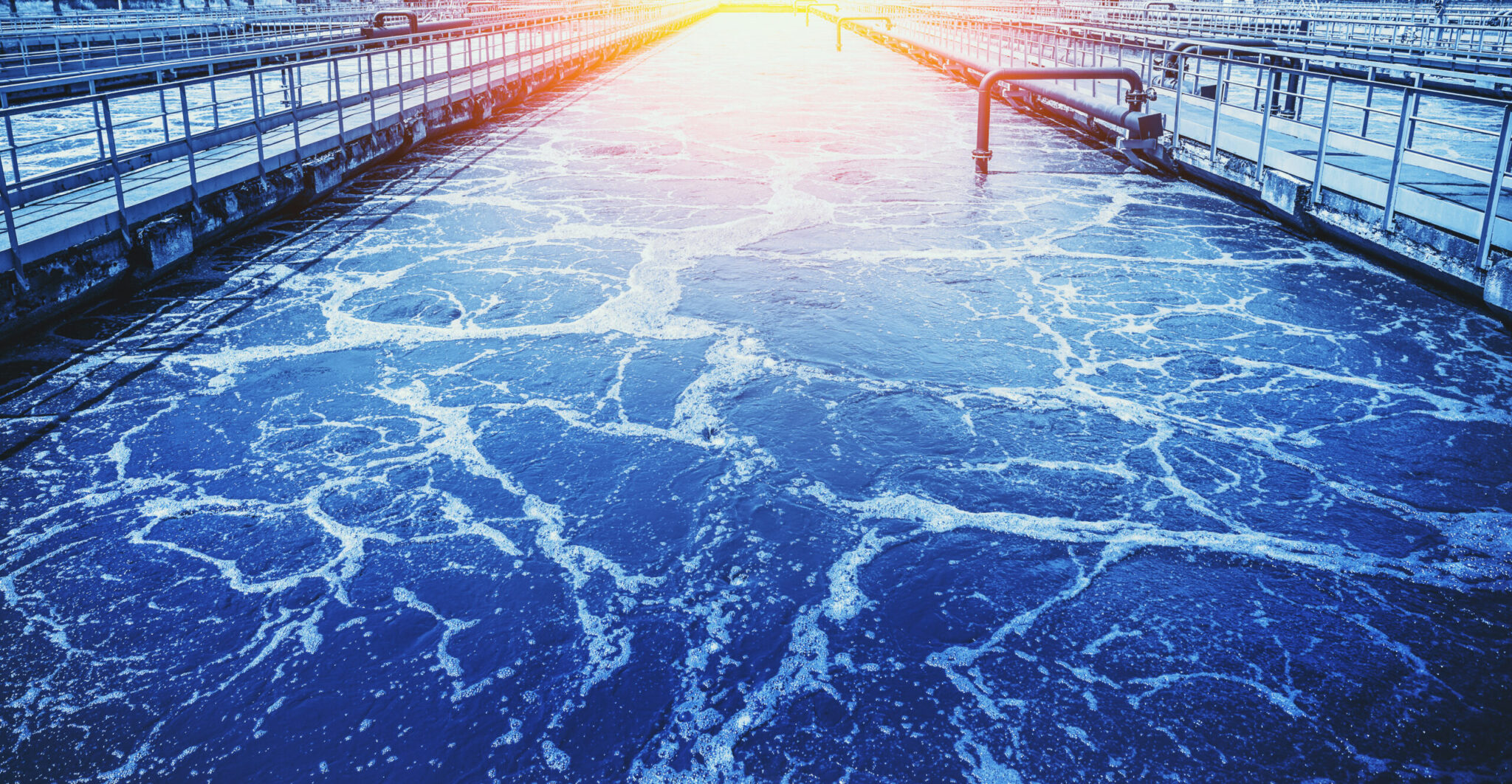
Compressed air plays a significant role in the wastewater treatment industry, consuming as much as 80% of the energy a plant uses, according to estimates from the U.S. Environmental Protection Agency and the U.S. Department of Energy.
Using Compressed Air Systems in Wastewater Treatment
Compressed air is used in a wide range of applications in the wastewater treatment industry. In fact, it is such a critical part of the process that compressed air pumps and blowers consume as much as 80% of a plant’s energy usage, according to the U.S. Environmental Protection Agency and the U.S. Department of Energy.
Sewage comes to wastewater treatment plants from a variety of sources, including residential sources like kitchens and bathrooms, commercial buildings and stormwater flowing off streets and buildings. Wastewater treatment facilities are operated by municipal authorities and private companies, usually major industrial plants or utilities.
In most plants, wastewater is treated in three stages:
-
- Primary stage. When raw sewage enters the plant, screens remove large objects like debris and sticks. Then, it goes into a grit chamber, which extracts sand, stones and other particles. Finally, it goes into a sedimentation tank that removes any remaining solids. Any suspended solids sink to the bottom of the tank, where they are pumped out and either incinerated, turned into fertilizer or moved to a landfill.
- Secondary stage. Microbes in a trickling filter ingest dissolved organic matter, transforming it into carbon dioxide, water and energy. The treated fluid next goes through a sedimentation tank to extract the remaining suspended solids. Then it moves into an aeration tank and finally into another sedimentation tank where any remaining bacteria are eliminated. It may additionally be disinfected with chlorine. At this point, more than 99% of the harmful bacteria have been removed.
- Tertiary stage. A flash mixer and a sand filter remove any remaining particles and solids. The wastewater goes into a chlorine contact tank to eliminate harmful microorganisms, such as bacteria, parasites and viruses. After the chlorine is removed, the treated water can be released into nearby waterways.
How Compressed Air Is Used
Compressed air is used throughout the wastewater treatment process in all three stages. Specific tasks include the following:
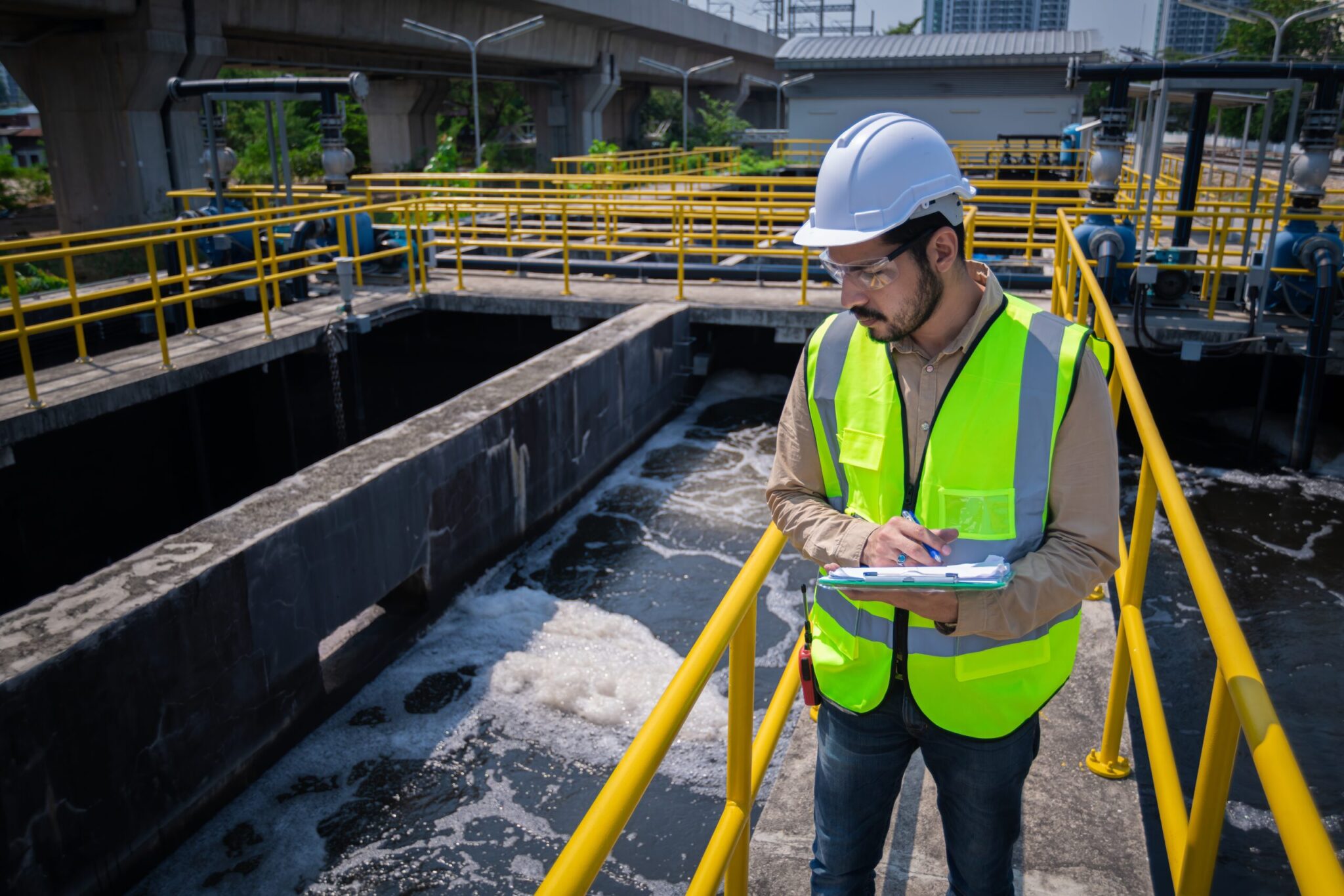
Aeration and oxidation are two critical processes compressed air supports in the wastewater treatment process.
-
- Aeration. Diffusers or bubblers in treatment tanks and lagoons inject air into the wastewater to break down organic materials and pollutants.
- Separation. In the activated sludge process, a grid of diffusers disperses low-pressure air to help separate solids from the wastewater.
- Oxidation. Air compressors pump oxygen into treatment tanks to help remove contaminants.
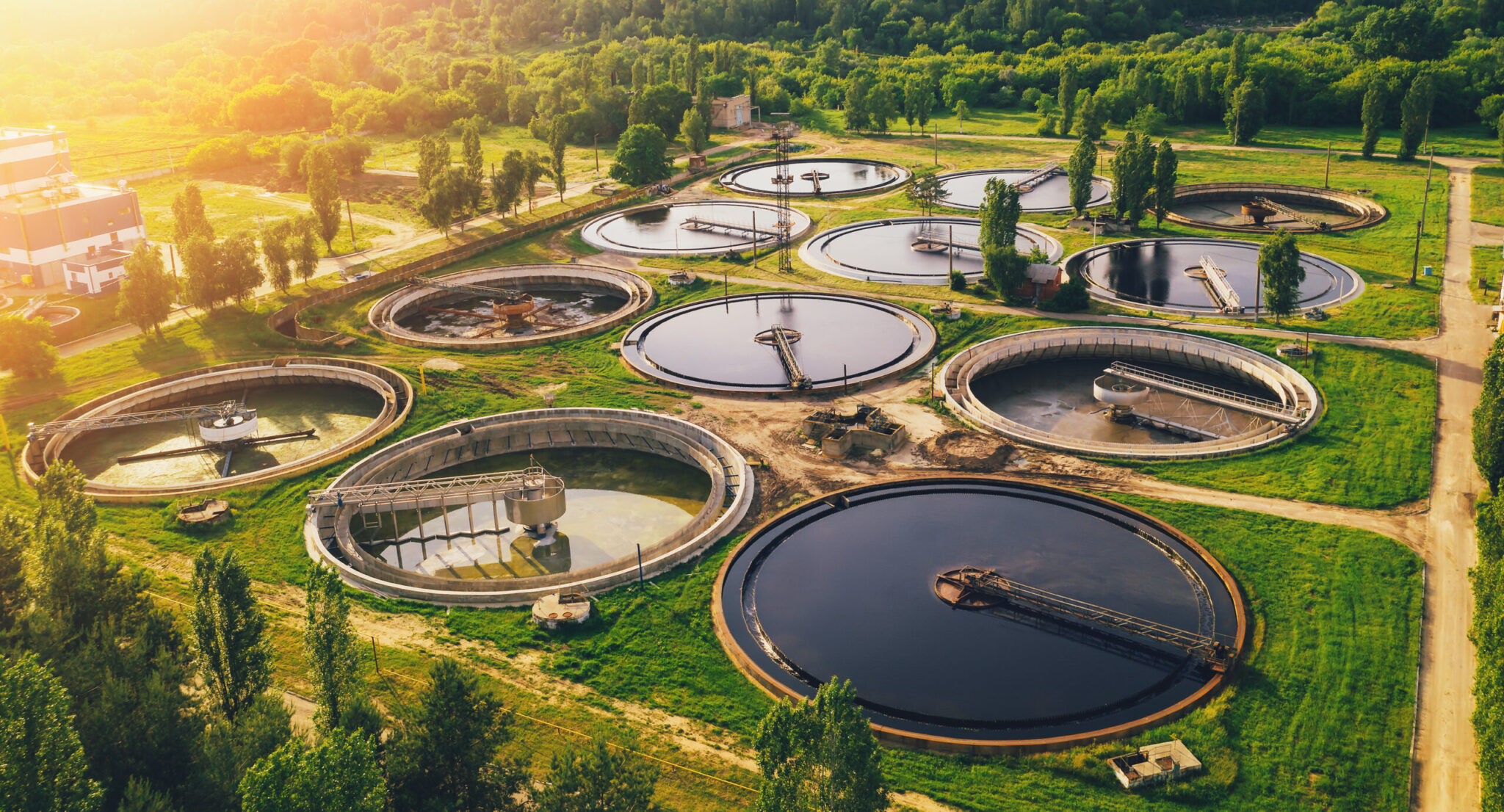
Compressed air helps remove contaminants, while wastewater is in treatment tanks or lagoons.
-
- Pumping. Compressor-driven pumps help keep slurry in suspension as the liquid moves from one tank to another.
- Mixing and agitation. Mixers powered by compressed air prevent sedimentation in the treatment tanks, adding oxygen to the mix and helping to disperse air or chemicals.
- Air flotation. Tiny bubbles pumped into the wastewater by the compressed air system help suspended particles float to the surface, where they are skimmed off.
- Sludge drying. Air compressors blow air over the sludge, drying it and removing excess moisture.
- Cleaning. Compressed air is involved in backwashing sand filtration, cleaning membranes used in membrane bioreactors and driving pumps used to remove wastewater and clean sewer networks.
Low-pressure compressed air (like our KRSL rotary screw low-pressure series) is often all that is needed for many of these applications. As a result, Compressed Air Best Practices encourages plants to consider use of blowers and electric pumps to reduce energy costs and improve productivity. However, we have found that many plant operators choose rotary screw air compressors to reduce the noise level in their plants.
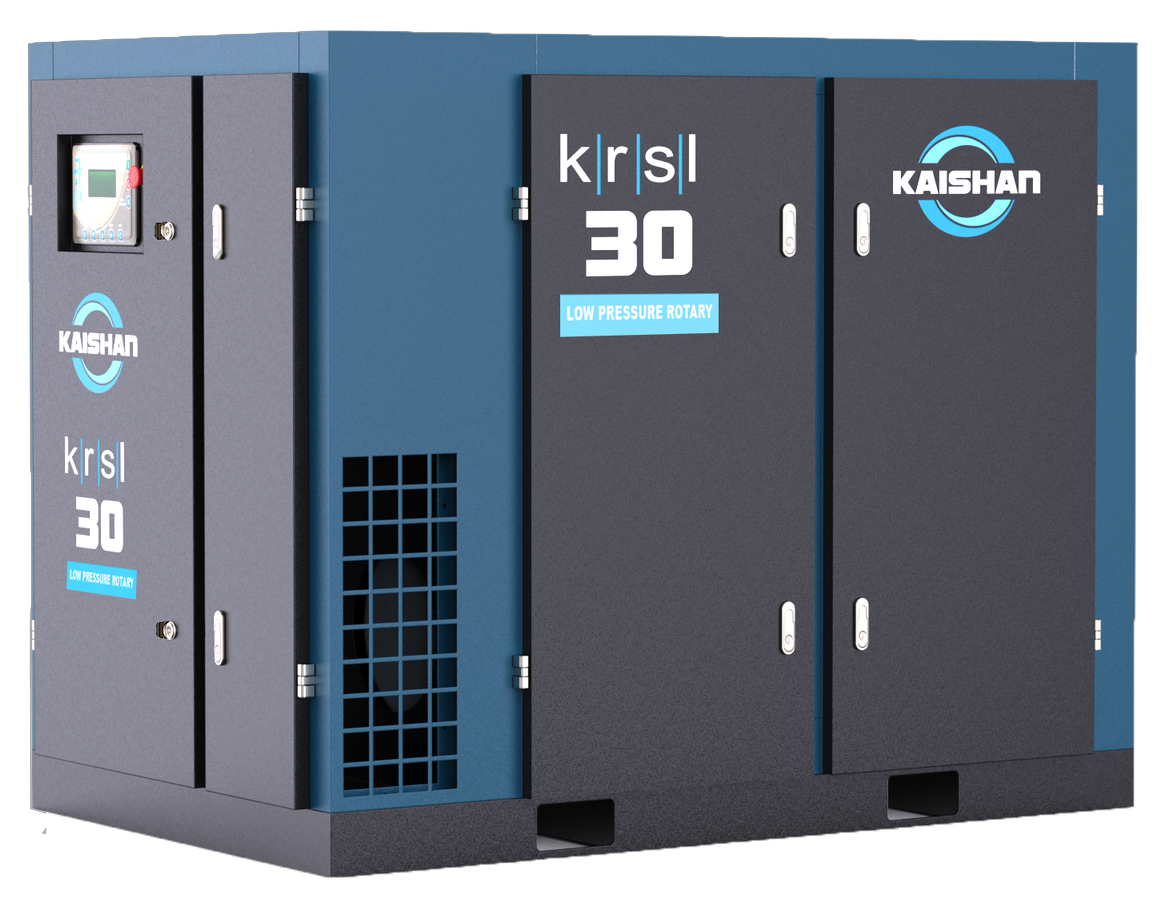
Our KRSL low-pressure series was designed specifically for low-pressure applications like many of the wastewater uses mentioned above. It has our breakthrough variable discharge port that helps the KRSL delivery high efficiency, performance, sustainability and energy savings.
The most effective use of rotary screw air compressors is in pneumatic controls.
Pneumatic Controls in Wastewater Treatment
Pneumatic controls are widely used in wastewater treatment plants because they offer several advantages over other power sources, including the following:
-
- Rugged durability. Pneumatic controls can withstand harsh conditions, like corrosive atmospheres or temperature extremes.
- Precision. Pneumatic devices allow precise control of pumps, valves, sensors and other instruments supporting the treatment process.
- Reliability. Pneumatic controls have been used for decades in demanding industrial applications, including the food and beverage, automotive and metallurgy industries.
Rotary Screw Air Compressors in Wastewater Treatment
Kaishan USA provides wastewater treatment operations with compression systems that thrive in heavy-duty environments. Our air compressors are built with exceptional features like stainless steel tubing and offer superior reliability, ease of maintenance and optimized energy efficiency to reduce overall lifecycle costs. Kaishan compressors keep operational costs down while eliminating costly downtime.

Our KRSP premium rotary screw air compressors are used extensively in the wastewater treatment industry.
Rotary screw air compressors appear in so many applications because of a wide range of advantages, including the following:
-
- Efficiency. Rotary screw air compressors are based on a simple, time-tested design that enables impressive efficiency. They deliver a continuous flow of air, resulting in smoother operation and significantly reduced energy waste. They operate continuously, minimizing fluctuations and enhancing overall efficiency.
- Safety. Compressed air systems are a natural for the industry because they are relatively safe, an important concern in any environment.
- Steady air flow. Rotary screw machines are known for producing steady streams of compressed air without the pulsations that sometimes occur with other types of compressors, especially reciprocating or piston compressors.
- Versatile. Rotary screw compressors work best with a 100% duty cycle—we recommend setting up your compressed air system so that they operate as close to full load as possible. In addition, they can handle variations in demand and temperature extremes. (for more on running rotary screw compressors with a 100% duty cycle, see our blog post, “How an Air Compressor Audit Can Reduce Operating Costs”
- Less maintenance. Because they have fewer moving parts, rotary screw air compressors require less maintenance.
- Long-term reliability. Rotary screw air compressors are designed for long-term reliability, giving them a relatively low total cost of ownership.
- Footprint. Rotary screw air compressors are compact and occupy relatively little floor space.
- Quieter. Compared to other types of compressors (especially reciprocating machines), rotary screw air compressors make much less noise.
- Warranties. Rotary screw air compressors generally have better warranties than other types of air compressors because of their reliability, efficiency and long life. In fact, Kaishan’s KRSP and KRSP2 rotary screw compressors are backed by a lifetime warranty on the airend.
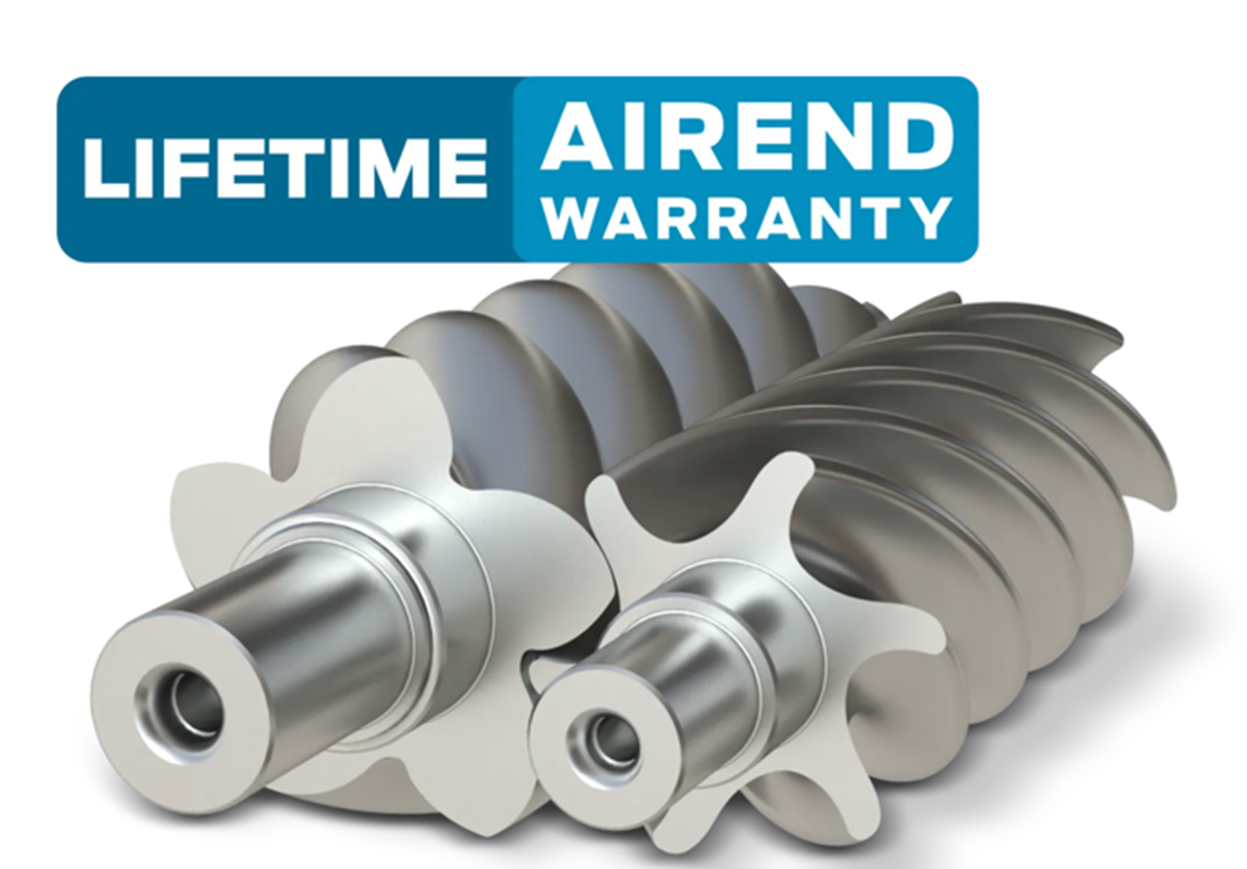
Kaishan’s KRSP and KRSP2 rotary screw compressors are backed by an unmatched lifetime airend warranty, thanks to their reliability, efficiency and long life.
Some manufacturers promote the use of oil-free air compressors for wastewater treatment applications. However, we find very few oil-free models in plants. First, because of their increased acquisition and operating costs. And second, because the wastewater treatment process itself can easily remove any airborne oil that lands in the wastewater.
Local Help
Kaishan USA works with a nationwide network of independent distributors, who can provide on-site help and consultation as needed. These factory-trained air compression experts have an investment in their local communities and can help you optimize your compressed air system.
Key Takeaways
-
- Compressed air is used in all three stages of wastewater treatment: primary, secondary and tertiary.
- Compressed air is used in a wide range of processes, including aeration, separation, oxidation, pumping, mixing, agitation, air flotation, sludge drying and cleaning.
- Compressed air is a critical part of the wastewater treatment process, consuming as much as 80% of a plant’s energy usage.
- The most effective use of rotary screw air compressors is in pneumatic controls.
- Pneumatic controls are widely used in wastewater treatment because of their rugged durability, precision and reliability.
- Rotary screw air compressors are used in wastewater treatment because of their reliability, efficiency, low maintenance and quiet operation.
Let Us Help
Using compressed air efficiently is critical to the operation of a wastewater treatment plant. If you need help selecting the right compressor for your plant, get in touch with the experts at Kaishan. Contact us today.
Random stat or
customer quote
textXXtext
text
Compressed air plays a significant role in the wastewater treatment industry, consuming as much as 80% of the energy a plant uses

